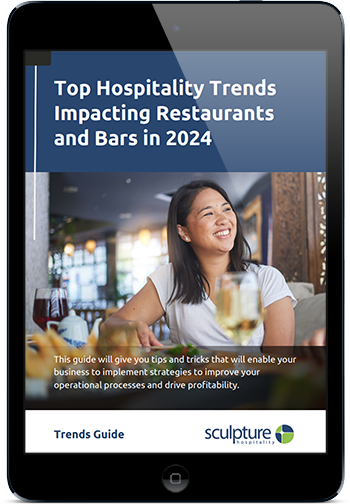Running a restaurant is both an art and a science. While creating delicious menu items and delighting customers might be your true driving factor for owning your business, understanding its financial health is equally as important.
One key metric that often keeps restaurant owners burning the midnight oil is the average restaurant profit per month.
For many restaurateurs, and business owners in general, average profit per month can be stressful. Questions such as; “is my average restaurant profit per month in line with industry standards?”, or “how can I increase this figure for higher profits?”, are enough to keep any business owner awake at night.
We’re here to help with that. In this blog, we'll unravel the mysteries behind this crucial number, exploring industry benchmarks, factors influencing profitability, and actionable strategies to elevate your average restaurant profit per month.
Understanding the Numbers
As a business, delighting customers and increasing profitability is the heart of everything you do. Yet for many restaurateurs, the financial side of the business can easily take a back seat to the more exciting and enjoyable creative side.
So, to start, let’s first define what we mean by average restaurant profit per month.
The average restaurant profit per month is the net income your restaurant generates after deducting all operating expenses from its total revenue. This bottom line is a reflection of your business's financial health, indicating whether you're in the red or basking in the green.
The calculation for this is:
Profit + Total Revenue - Operating Expenses
- Total Revenue: This includes all income generated by your restaurant, including sales, catering, and any other revenue streams.
- Operating Expenses: These encompass all costs associated with running your restaurant, such as food and labour costs, rent, utilities, marketing, and equipment maintenance.
Profit Margin Industry Benchmarks
The profit margin for restaurants can vary widely, depending on a large range of factors, including:
- Operational efficiency
- The type of restaurant that you operate
- Your restaurant’s pricing strategy
- Cost control
- How much you invest in marketing and branding
- How good your customer experience is
While these are all factors that will affect your average restaurant profit per month, there are three categories that you can use to gain a better understanding of your profit margin compared to other businesses in the industry.
- High Profit Margin (10 percent or higher): A high profit margin indicates that your restaurant is effectively controlling costs and operating efficiently. This surplus can be reinvested in the business or serve as a buffer during lean periods.
- Average Profit Margin (3 to 6 percent): Falling within the industry benchmark, an average profit margin suggests a healthy balance between revenue and expenses. It's a good starting point but leaves room for improvement.
- Low Profit Margin (Below 3 percent): A low profit margin may signal that your restaurant is grappling with high operating costs or facing challenges in pricing strategy. It's a red flag that warrants a thorough examination of your financial structure.
Strategies for Maximizing Average Restaurant Profit
1. Cost ControlConduct a thorough analysis of your food and labour costs. Negotiate with suppliers for better deals, optimize your menu to minimize waste, and ensure that staffing levels align with customer demand.
2. Menu EngineeringRevise your menu strategically. Highlight high-margin items, analyze customer preferences, and consider introducing seasonal specials to keep offerings fresh and enticing.
Menu Pricing: How to Price Your Restaurant Menu for a Profit
3. Inventory ManagementTo curb overstocking and reduce waste, it's crucial to implement a robust inventory control system. This involves consistently tracking and updating inventory levels to ensure accurate data, providing a solid foundation for informed decision-making. Technology can help you implement accurate inventory control
4. Technology Integration
Leverage technology to streamline operations. Implement point-of-sale (POS) systems, restaurant management software, and inventory tracking tools to enhance efficiency and reduce human errors.
5. Marketing and PromotionInvest in targeted marketing campaigns to attract new customers and retain existing ones. Loyalty programs, social media engagement, and partnerships with local influencers can contribute to increased footfall.
6. Training and DevelopmentEquip your staff with the skills and knowledge needed to provide excellent customer service. A well-trained team can upsell effectively and enhance the overall dining experience, boosting customer satisfaction.
7. Regular Financial AnalysisConduct regular financial analyses to identify trends, areas of improvement, and potential cost-saving opportunities. Staying proactive with financial management can prevent small issues from snowballing into major financial setbacks.
Want to learn more tips for boosting your restaurant's average profit per month? Get in touch with Sculpture Hospitality today. Our team of inventory management experts would love to help you grow.











